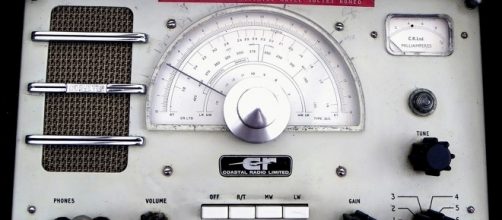Everyone knows that NOAA monitors weather conditions on earth, but few realize that there is also a Space Weather service which is another division of NOAA that focuses on the weather conditions as they exist on the sun. This is mainly intended for use by utilities and anyone operating satellites as well as any occupants of the International Space Station, but NOAA’s Space Weather Prediction Center can be important to everyone when the sun’s surface becomes extremely active.
Space weather
The reason space weather is seldom if ever mentioned on TV newscasts is probably best explained by looking at just what a warning from NOAA's Space Weather network is like:
- “EXTENDED WARNING: Geomagnetic K-index of 7 or greater expected
- Extension to Serial Number: 71
- Valid From: 2017 Sep 07 2300 UTC Now Valid Until 2017 Sep 08 2100 UTC
- Warning Condition: Persistence”
That is the actual text of one of the warnings which I received this morning.
I usually see one or two of these notices a month, but there were six today in the space of a few hours, so NOAA is very concerned about this solar event.
Unless you are a scientist that is pretty much meaningless but it is nonetheless extremely important because intense surges of solar radiation ranging from the ongoing daily solar radiation which we are protected from by Earth’s magnetic field to full blown coronal mass ejections which can damage electric grids and interfere with communications.
Today there was a new warning predicting a solar storm reaching a G4 event which is strong enough that it can induce currents in long pipelines and especially the electrical grid. It can also degrade or completely disable GPS services for hours.
High-frequency radio communications will also be interfered with.
But on the positive side, a G4 solar radiation event means that the Aurora may be visible as far south as Alabama and parts of California.
Amature radio (HAM)
A popular hobby from the early days of the last century through about the time of the creation of the internet was HAM radio or amateur radio. These pioneers of the communications arena have almost been forgotten by most people today, but they are still very active and play a critical part in emergency management even today.
Why, you may ask, is amateur radio important in these days of satellites and free internet video conference via SKYPE?
The answer is simple if you think about it.
How do you send a message to the next state or the other side of the world when the cell tower is destroyed, and the phone lines are all laying on the ground?
HAM radio operators are the only people who are equipped to communicate with distant locations entirely independent of satellites, the internet, and phone wires. Many of them are prepared to operate off the grid and network with other operators around the world right from their “shack.”
In fact, HAM operators are very well organized and integrated with Emergency Management Agencies such as FEMA and have just activated their emergency networks VoIP SKYWARN and the Hurricane Watch Net.
Solar storms can interfere with long distance radio communications, but those are usually very brief occurrences which pass away in minutes or hours entirely on their own, as opposed to having to replace hundreds of miles of telephone lines.
In addition, the major HAM organization is called the American Radio Relay League and relay is an important part of that group’s name because when long distance radio contact is disabled due to electromagnetic storms the league members link together and forward messages in shorter hops even when they can’t bounce messages off the ionosphere to the other side of the continent or world.
IRMA
As hurricane Irma is poised to engulf the entire state of Florida, it is very likely that power, the internet, and phone networks will all go down and may remain unusable in portions of the state for many days or even weeks.
The only communications which will be operating in many areas will be the network of local HAM operators working with emergency management agencies and also passing messages to and from individuals.
HAM operators will be working to keep individuals in contact with emergency services and also with relatives in other states.
While Irma herself won't drastically affect emergency HAM radio operations, if there is a continued solar storm going beyond the currently predicted duration than even HAM operators may not be able to provide reliable communications.
If that happens, then you are likely to hear about NOAA's Space Weather Prediction Center even on TV newscasts.


